Over the course of my time here, I've run into several groups of birders, as well as had numerous conversations with the bird groups here at camp. I could show you great pictures they've taken of birds or ones I downloaded from the Internet, but I thought you might like to see them from my point of view!
One bird I was really looking forward to seeing, the Arctic Tern, appeared on my second or third day here. A pair lives here at the lake and is likely nesting. The birds can be spotted hovering high above the lake; after a few moments of fluttering, they plunge dive in for a fish. It's too high for my camera to do justice, but I did get a nice picture of one near the Atigun River. 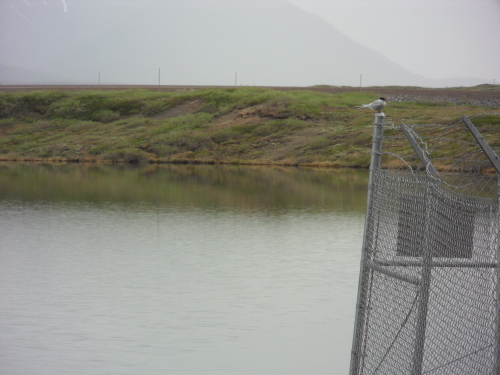
I first heard about these amazing birds back in college from my mentor professor, Dr. Oz Hawksley, who had studied these birds for his thesis at Cornell University. It turns out that the Arctic Tern is also the symbol for PolarTREC. Arctic terns migrate an astonishing 40,000km from Antarctica to their breeding grounds in the Arctic each year. An appropriate bird for PolarTREC to pick, as the program sends teachers to both poles in order to work with scientists.
Another bird I've heard, but not seen, is the yellow-billed loon. Toolik means "loon", so you can imagine I had hoped to see one on Toolik Lake. A pair has arrived here for the season, and I've heard their calls in the very early morning hours.
I think once you hear it's call you'll have a better feeling for the saying "crazy as a loon".
A favorite bird I've really gotten to know is the Lapland Longspur. A pair nests at our site at Imnaviat, and I've enjoyed their company on several quiet afternoons. 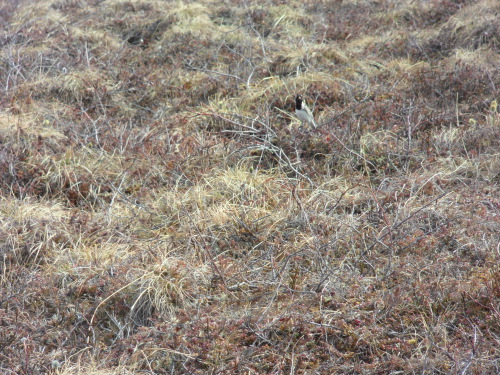
These are striking little songbirds, from the front showing a black head and from the back showing a beautiful chestnut color.
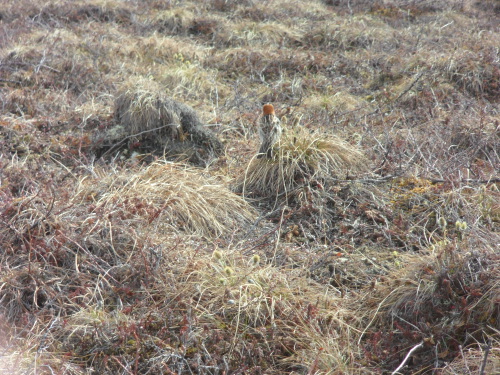
This one seemed to know I needed both sides for this journal!
Another bird nesting at Imnaviat is the American Golden Plover. I had stepped off our plots to look around for a nearby sik-sik den, and all of a sudden there appeared this bird, making a big show walking away from me and dragging its broken wing.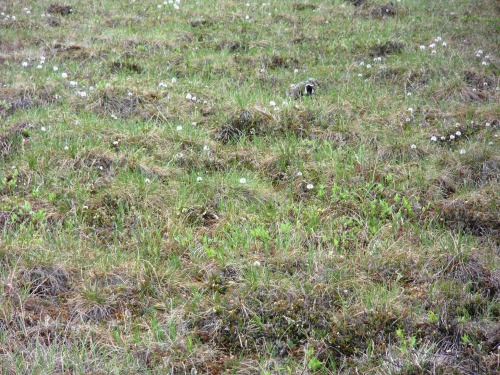
I remembered from ornithology class (thanks, Oz!) that this was a ruse devised to lure me away from her nest. The plovers nest on the ground, with the eggs exposed. I stood still, worried I might accidentally step on the eggs that would be well camouflaged, and she turned around and really gave me a show. I got a quick video of her strategy to keep me away. Take a look!
http://youtu.be/TE3c_qtOWCc
When I first arrived, willow ptarmigans had posted themselves around camp, sounding a lot like chickens. In May, they still had the white winter plumage allowing them to blend into the snow. Now they have changed to their breeding plumage, which easily camouflages them among the willows and grasses alongside the roads. I've not spotted the one near camp for awhile, but I had noticed one sitting tight in a spot alongside the road I often walk in the evening. 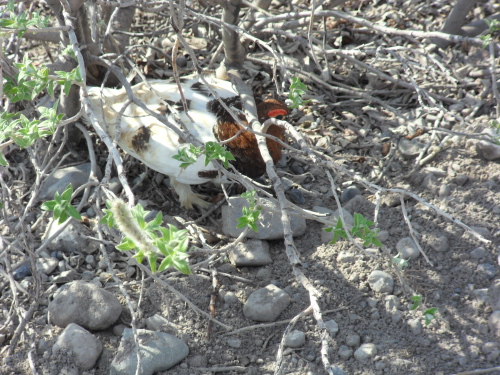
The other day it became clear as to why he had been staying so still, perhaps he had been guarding a nesting female! 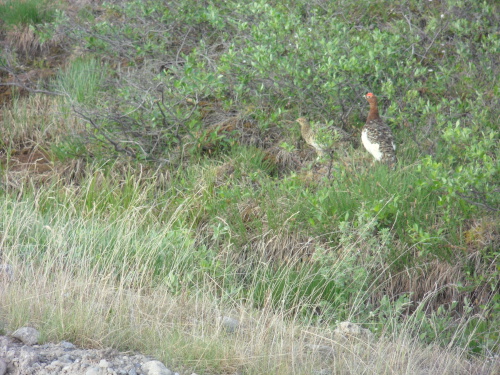
Here's a little video of the ptarmigan and her nearly invisible chicks. Even if you can't see them well, you can hear their little peeps!
http://youtu.be/y8Jvjk8UmqE
As you can tell, I'm enjoying seeing these breeding birds. Earlier in the season, when Melissa Barker was here, she spent an exciting day out with the bird group as they banded birds in order to keep track of their populations. See We Brake for Birds!. Banding season is over, and the tasks for the birders have turned to breeding bird surveys and nest surveys. The birding crew at the Environmental Data Center here has been doing point count surveys of breeding birds in the area up until the last few days. Point counts are an accepted protocol for surveying bird populations. The birder will follow a prescribed route repeatedly over several weeks. They stop at numerous points along the way, where they listen and look for a set amount of time, often 10 minutes. They identify every bird they can at that point, and then move on. Amateur and professional birders worldwide do these point counts, and contribute to the data we have on bird populations and their status. Over the past couple of weeks, the birding has turned to nest observations. Several of us have been observing redpoll nests near camp. These tiny little delicate birds are only 1 of 11 species that overwinter here in the Arctic. They make the coziest little nests, and are extraordinarily calm and determined to stay on them. On this particular trail, a dozen or so walkers and cyclists might pass this nest every day. 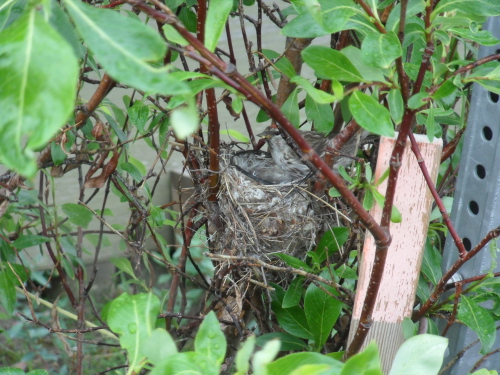
I've read that this tiny little bird survives through the winter by burrowing into vole nests, or diving under the snow. That's one tough little bird!
Wherever you are, you can always see or hear wildlife. Birds are always around us, and studying them, learning to identify them, and promoting their conservation worldwide are worthy pastimes! 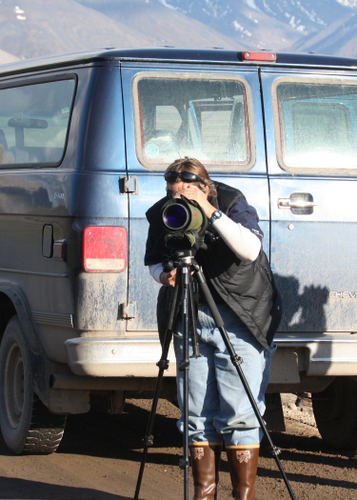


Comments